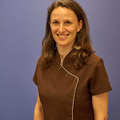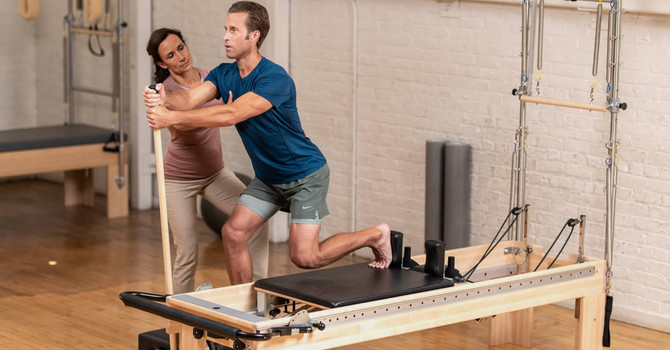The Foundations and Evolution of Craniosacral Therapy
Dr. William Garner Sutherland: A Pioneer in Osteopathy
Dr. William Garner Sutherland is widely credited with founding craniosacral therapy. As a student of Dr. Andrew Taylor Still, the founder of osteopathy, Sutherland’s journey towards discovering craniosacral therapy began with a simple yet profound observation during his osteopathic training at the American School of Osteopathy in the early 1900s.
The Initial Insight
While examining a disarticulated skull, Sutherland noticed the beveled, overlapping edges of the cranial bones, which reminded him of the gills of a fish, seemingly designed for movement. This observation sparked his curiosity and led him to ponder the possibility that these bones were meant to move, despite the prevailing medical opinion that the adult skull bones were fused and immobile.
Self-Experimentation
Driven by curiosity, Sutherland conducted numerous self-experiments. He designed and built various helmets and devices to apply different pressures to his own head to test the effects of cranial bone movement. Through these experiments, he experienced significant changes in his physical and mental states, which reinforced his hypothesis that cranial bones have a subtle, rhythmic motion essential for health.
Development of the Cranial Concept
Over time, Sutherland developed the concept of the "Primary Respiratory Mechanism" (PRM), which he believed was the fundamental rhythmic movement within the body. PRM consists of five components:
- Inherent Motility of the Brain and Spinal Cord: The brain and spinal cord exhibit a subtle, intrinsic motion.
- Fluctuation of Cerebrospinal Fluid (CSF): CSF moves rhythmically, providing cushioning and nourishment to the brain and spinal cord.
- Mobility of the Intracranial and Intraspinal Membranes: The membranes within the cranial and spinal areas have inherent motion.
- Articular Mobility of the Cranial Bones: The cranial bones exhibit slight movements along their sutures.
- Involuntary Motion of the Sacrum Between the Ilia: The sacrum moves in response to the PRM, influencing the pelvis.
Clinical Application
Sutherland began to apply his cranial techniques clinically, observing profound effects on patients with various ailments. He noted improvements in conditions such as headaches, sinus problems, and mental health issues. Encouraged by these results, he started teaching his cranial approach to other osteopaths.
Establishment of Craniosacral Therapy
The term "craniosacral therapy" emerged later, popularized by Dr. John Upledger, an osteopathic physician who expanded on Sutherland's work. Upledger’s research and clinical practice brought further validation and broader recognition to the field.
Legacy and Impact
Dr. William Sutherland’s pioneering work laid the foundation for craniosacral therapy, a gentle and non-invasive therapeutic approach that emphasizes the body's natural rhythms and inherent healing capabilities. Today, craniosacral therapy is practiced worldwide, helping individuals with a wide range of physical and emotional conditions.
Cranial Osteopathy
Osteopathic practitioners can detect a craniosacral rhythmic motion of about eight to twelve cycles per minute. This rhythm, caused by the production and re-absorption of cerebrospinal fluid (CSF) and other brain and spinal cord fluids, indicates health and vitality. Dr. John Upledger popularized the term "craniosacral therapy," originally known as cranial osteopathy.
What Structures Are Involved?
Cerebrospinal Fluid (CSF)
CSF is contained within the dura, which surrounds the brain and spinal cord, extending to the sacrum and tailbone. It is formed and absorbed through blood capillaries in the brain, ventricles, and lymphatic system. The dura transmits tension along the spinal cord to the sacrum.
Glymphatic System
Lymphatic vessels in the dura, around the pituitary gland, eye, nasal mucosa, and middle ear, as well as most cranial and spinal nerves, help remove toxic waste from the brain. The glymphatic system, involving glial cells, facilitates this waste removal into the lymphatic system in the neck.
The Breath of Life or Biodynamic Techniques
Biodynamic practitioners refer to the concept of the "Breath of Life," an intrinsic force that permeates all living tissues and drives the primary respiratory mechanism. This force is thought to organize and sustain health at a cellular level, and practitioners aim to tune into and support its expression in the body.
Techniques and Practices in Biodynamic Craniosacral Therapy
Listening to the Body
Biodynamic craniosacral therapists adopt a listening approach, using their hands to palpate and tune into the body's subtle rhythms and expressions of health. This requires a high degree of sensitivity and presence, allowing the practitioner to perceive the body's inherent motions and patterns of tension.
Facilitating Natural Healing Processes
Rather than applying force or specific manipulations, biodynamic practitioners support the body's natural healing processes. This may involve gently holding areas of the body, following the inherent movements, and facilitating the release of restrictions and tensions.
Working with Stillness
Stillness is a crucial aspect of biodynamic craniosacral therapy. Practitioners recognize moments of stillness as opportunities for profound healing and reorganization within the body. These moments allow the body to reset and re-establish its natural rhythms.
Why Work With the Craniosacral Rhythm?
- Enhancing Circulation: Craniosacral techniques improve blood circulation around the brain and CSF within the dura, nourishing nerve tissues and boosting immune function.
- Fluid Movement: Gentle rocking motions release nerve tensions along the spine and alleviate strain patterns throughout the body.
- Addressing Interference: Inflammation, trauma, infection, epidurals, toxicity, viruses, and illness can disrupt the craniosacral rhythm. Therapy can restore balance.
- Calming Effects: Craniosacral therapy calms the nervous system, balances the autonomic nervous system, and settles the reticular alarm system, reducing stress.
Cranial osteopathy stands out in osteopathic treatment for its profound effects on the nervous system.
Scientific Validation and Future Directions
The scientific validation of craniosacral techniques remains a subject of debate. Traditional medical understanding has held that once the fontanelles close, the skull bones become immobile. However, recent insights into the innervation of cranial sutures suggest that these areas may have a role in the effectiveness of cranial techniques. This new understanding might provide a fresh perspective on why these techniques appear to work, even if it challenges earlier explanations. Although current theories lack comprehensive scientific validation, further research into the effects of craniosacral therapy could lead to new explanatory concepts and enrich our understanding. Osteopathic techniques are expected to be validated from new angles of study in the coming years, offering a deeper insight into their mechanisms and benefits.
As someone trained in craniosacral therapy, I cannot refute the heritage and the profound impact of touch inherent in these techniques. They have significantly contributed to developing my sense of touch and therapeutic approach. However, I am not comfortable with the current explanations for these techniques. In my practice, I primarily focus on reestablishing the proper physiology of "secondary respiratory mechanism" (=breathing) before addressing the Primary Respiratory Mechanism (PRM). Depending on the symptomatology, I sometimes prioritize working on the PRM first. This flexibility in approach allows me to tailor the therapy to each individual's needs, optimizing their healing process.
Resources for Further Reading
- Sills, F. (2001). The Polarity Process: Energy as a Healing Art. North Atlantic Books.
http://www.craniosacral-biodynamics.org/ - Jealous, J. (2006). Biodynamic Osteopathy. American Academy of Osteopathy.
https://traditionalosteopathyedu.com/ - Becker, R. W. (2001). Life in Motion: The Osteopathic Vision of Rollin E. Becker. Stillness Press.
https://www.stillnesspress.com/becker - McPartland, J. M., & Skinner, E. (2005). The Biodynamic Craniosacral Therapy Primer. North Atlantic Books.

Lucile Delorme
Contact Me


